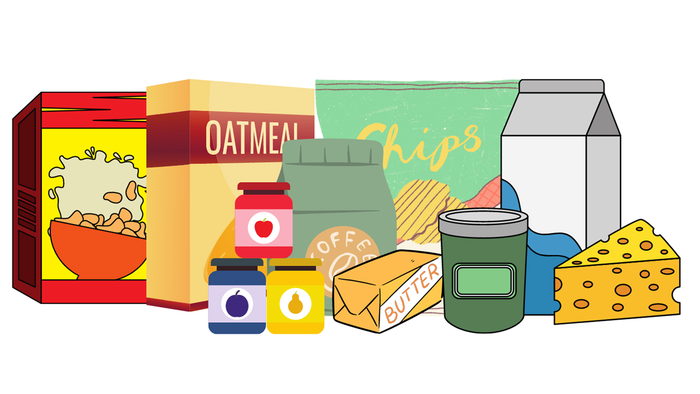Why cash flow is the No. 1 predictor of surviving the pandemic
Keeping track of all money moving in and out is critical to making it through the COVID-19 crisis.
July 6, 2020

The COVID-19 pandemic has posed unprecedented challenges for natural products entrepreneurs, decimating business for some while sending others’ sales soaring. Every brand in our industry is feeling its effects in one way or another. Although many companies will be able to tolerate the upheaval, plenty won’t make it through this crisis or ensuing economic recession with their doors still open.
What will separate the survivors from the business casualties? According to Gary Hirshberg, co-founder and chairman of Stonyfield and founder of the Hirshberg Entrepreneurship Institute, it all comes down to cash flow. He says that knowing how much cash is flowing in and out of your business right now and being able to forecast how much will be moving in and out in the near future is the most critical indicator of whether or not a natural products brand will make it.
“To say that understanding cash flow is important is understating it—it is life and death,” Hirshberg says. “There is nothing more important to your business’s survival than this. You can say it’s your product’s taste and quality—and yes, those are all helpful and will make you more successful—but running out of cash is something nobody can [withstand].”
While this knowledge should be hardwired into every business leader, even experienced CEOs overlook cash flow’s significance. “When figuring out how much money they’ll need for the next year, many just look at their P&Ls and assume,” Hirshberg says. “This is a classic error because cash flow is very different from profit and loss. If you need a surge of orders to build up for a big customer, then you suddenly lay out a lot of money. If a large wholesale distributor gets into a slowdown and isn’t paying you, you can suddenly not be able to make payroll.”
Having a firm grip on cash flow will inform nearly every business decision you make. “It tells you whether you’ve got to tighten your belt, not make payroll, not make rent, get a loan or call your creditors,” Hirshberg says. “During difficult times, people are generally understanding if you tell them ahead of time what you’re going to do versus them having to call you looking for money. Pick up the phone and ask if you can send them $5,000 instead of $50,000 this week. Or say ‘hey, UNFI, Wegmans or Kroger, I have some equipment coming in; do you mind if I hold off on paying you?’”
However, the only way you can be open with partners about your plans, he insists, is if you aren’t shocked by your own cash flow reality.
While the COVID-19 crisis has brought this into sharp focus, the need to understand cash flow existed long before the pandemic. “I have run entrepreneurship institutes for 20 years and have begun every single one with an hourlong presentation on cash flow,” Hirshberg says. “The reason for that is you can be in business for a very long time without making money, but you can’t be in business for a single day without having cash flow.”
Hirshberg himself learned this the hard way, during what he calls “the bad old days” at Stonyfield in the 1980s when he was out of cash. “We went through a stretch where I had to write daily cash flow formulas,” he says. “I developed a worksheet to track cash flow so I knew how much money was going out the door and could be very disciplined about what came in the door. This tool became my sun, moon and stars. I looked at it every single day—it was my bible.”
Decades later, Hirshberg shares this same “super simple but highly evolved” worksheet with entrepreneurs during his institutes and the twice-weekly seminars he began conducting early on in the pandemic. Anyone can access the cash flow worksheet for free. “When I say it’s user-friendly, know that I had no traditional finance experience when I started Stonyfield,” he says. “I didn’t know what a balance sheet was.”
When forecasting cash flow, it’s critical to be realistic and check your own optimism, which can be tough for entrepreneurs, who are typically serial optimists. “We tend to underestimate when funds need to go out the door and overestimate how quickly funds come in,” Hirshberg explains. “So whenever you think money coming in will be on a per-week basis, take it down by 50%, and whenever you think money will be going out, take it up by 50%. You have to do both. Smart, well-intentioned people get nailed by both.
Mapping out and forecasting cash flow is especially crucial to jump on right now, as neither the pandemic nor the recession has an end date in sight. But it’s a practice that every entrepreneur should continue for the long haul.
“This exercise needs to become part of your regular business discipline, especially for smaller businesses,” Hirshberg says. “Entrepreneurs often leave this to their accounting people. No, no, no. If it takes four days to hear from your accountant about cash, you could be in cash trouble. As a CEO at the top of a company, if you don’t understand your own cash turn and rhythms, your business is at great risk, and before you know it, it could be out of your control.”
About the Author
You May Also Like




